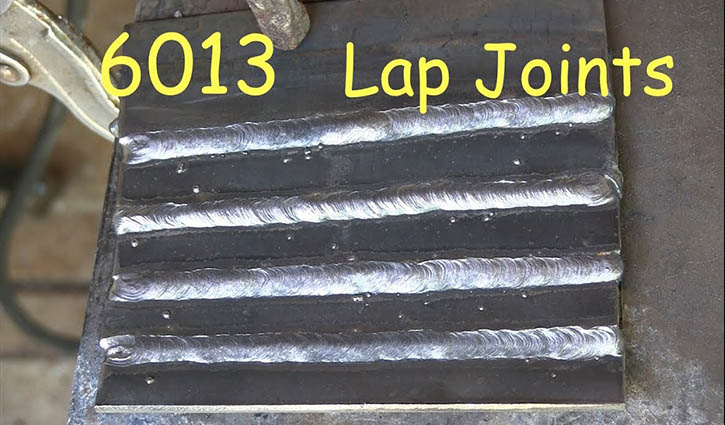There are so many variations in welding rods that someone with little knowledge about welding will easily get confused. With a similar naming model, it is very hard to distinguish the electrodes just by their model name. The same thing may happen to the 6013 welding rod if you don’t have proper knowledge of it. So, let us talk about the E6013 electrode to inform you thoroughly!
The E6013 is one of the most widely-used electrodes for general-purpose usage. This electrode is also known as a “Beginners’ rod”, “sheet metal rod” or “easy rod”. Therefore this rod is mainly used for thin metal sheets or where heavy welding is not needed.

Also, this is a great welding rod for beginners as it is an all-position rod. Let’s know about this commonly used rod in detail.
What does E6013 stand for?
The E stands for the electrode. The following two digits stand for tensile strength. Therefore the value 60 means welding by this electrode has a minimum of 60,000 PSI tensile strength.
The third digit stands for the welding position. In this case, “1” means you can use this rod in all positions-horizontal, vertical, flat, and overhead. And lastly, the 4th number resembles the type of slag, power supply, and flux composition.
In this case, the digit 3 means the E6013 works on both AC and DC straight or in reverse polarity.
Read More: Types Of Welding Rods: Everything You Need To Know
E6013 Welding Rod Specifications
- This rod has a minimum 60,000 PSI tensile strength.
- Yield Strength minimum 48,0000 PSI
- It can be used on AC or DC in straight or reverse polarity.
- The E6013 is used for low to medium penetration.
- Diameters: 3/32”, 1/8”, 5/32”, 3/16”
- Flux coating: High Titania Potassium.
- All position welding rods.
E6013 Welding Rod Applications:
- General purpose welding
- Shipbuilding and repairs
- buildings and light structures
- Thin sheets of metal welding
- Welding of automobiles
- Damaged steel
Read More: 6013 Vs 6010 Welding Rods: Which One Will Serve You Better?
E6013 Welding Rod Composition
The E6013 rod flux is made up of rutile elements, ferromanganese, cellulose elements, and potassium silicate. The reason for which this rod is usable with thin sheets of metal is that the potassium compound permits the rod to work on low ampere flow as well as low open circuit voltage. During welding, the coating of the E6013 will burn and mainly release carbon dioxide (CO2) gas.
What is unique about the E6013 electrodes?
The key feature of the E6013 electrode is that it can be used with thin metal sheets which differentiates the electrode from the other electrodes. It creates a medium stable arc which makes it very easy to handle.
Hence, it is named “beginners’ rod”. With this simplicity, one disadvantage comes and that is this rod cannot be used on dirty or rusted surfaces as it does not have deep penetration capabilities like E6011, and E6012.
FAQs
Yes, you can weld cast iron with an E6013 electrode. In fact, E6013 is best with iron. It is recommended you use E6013 for light penetration and E6011 for deep penetration.
The E6013 works on both AC and DC power sources on straight or reverse polarity.
Yes, you can weld aluminum with E6013. But there are some dedicated welding rods and techniques for aluminum.
Yes, the E6013 electrode has a minimum of 60,000 PSI tensile strength which is very strong.
Yes, you can. Weld by E6013 cools very fast so welding can be done mostly in any position.
Yes, you can but whipping the electrode reduces the protection against the surrounding air.
E6013 is used for less than 20mm thickness. For more thickness, you can try E6011.
Yes, the E6013 is almost an all-position welding rod you should not weld directly vertically down.
Verdict
Now that you have all the necessary knowledge about the E6013 electrode, you can easily determine whether you should choose the E6013 or not. To summarize, you can use E6013 for all scenarios just like E6011 and E6012 except for deep penetration.
It is an easy rod to handle and has a medium arc, so it has a good finish too. Overall this is a very versatile electrode.
Read More: 6010 Vs 7018 Welding Rods: Which One Should You Choose